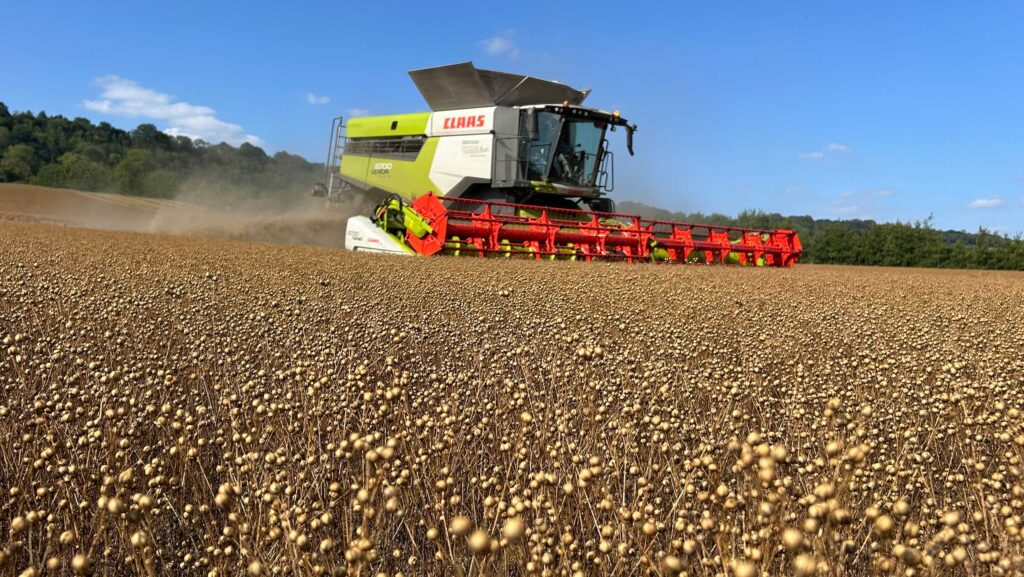Farmer impressed with first linseed crop despite dry spring
 © MAG/Lois King
© MAG/Lois King A north Kent farmer is impressed with the outcome of his first linseed crop, despite the dry spring.
Tom Gore is farm manager for DG and JW Gore, which has 1,600ha of arable and grassland across north Kent.
See also: Maize harvest off to very early start in Somerset
Milling wheat is the main cash crop for the farm, with break crops including beans, oilseed rape and for the first time this year spring linseed.
“We needed another break crop to stretch the rotation, pulses struggle on our land, and we only want oilseed rape in the rotation every five-to-six years,” says Tom.
The linseed variety Bingo was drilled in late April at a seed rate of 49kg/ha onto light land.
Prior to cultivation, sewage cake was applied along with 90kg/ha of nitrogen in the form of ammonium nitrate, some of which was applied to the seed-bed and the rest post establishment.
Tom chose linseed as an alternative break crop due to its later drilling window, low input costs and benefits to soil structure, making it a good entry crop for wheat the following season.
Performance
“To make it profitable this year we ideally need 2t/ha,” says Tom.
During harvesting of the first field, yields reached only 1.5t/ha due to the drought-stressed conditions that stunted crop growth.
Nevertheless, the crop has been cutting well, with only minor issues of wrapping, but nothing disastrous.
“I will give it another go next year. We can use home-saved seed to reduce costs and it’s a good crop to widen the rotation and spread risk across the farm,” says Tom.
Overall, Tom has been pleased with his harvest this year given the very dry conditions and light soils.
While average yields across the rotation have been lower than usual, the crop quality has been good.

